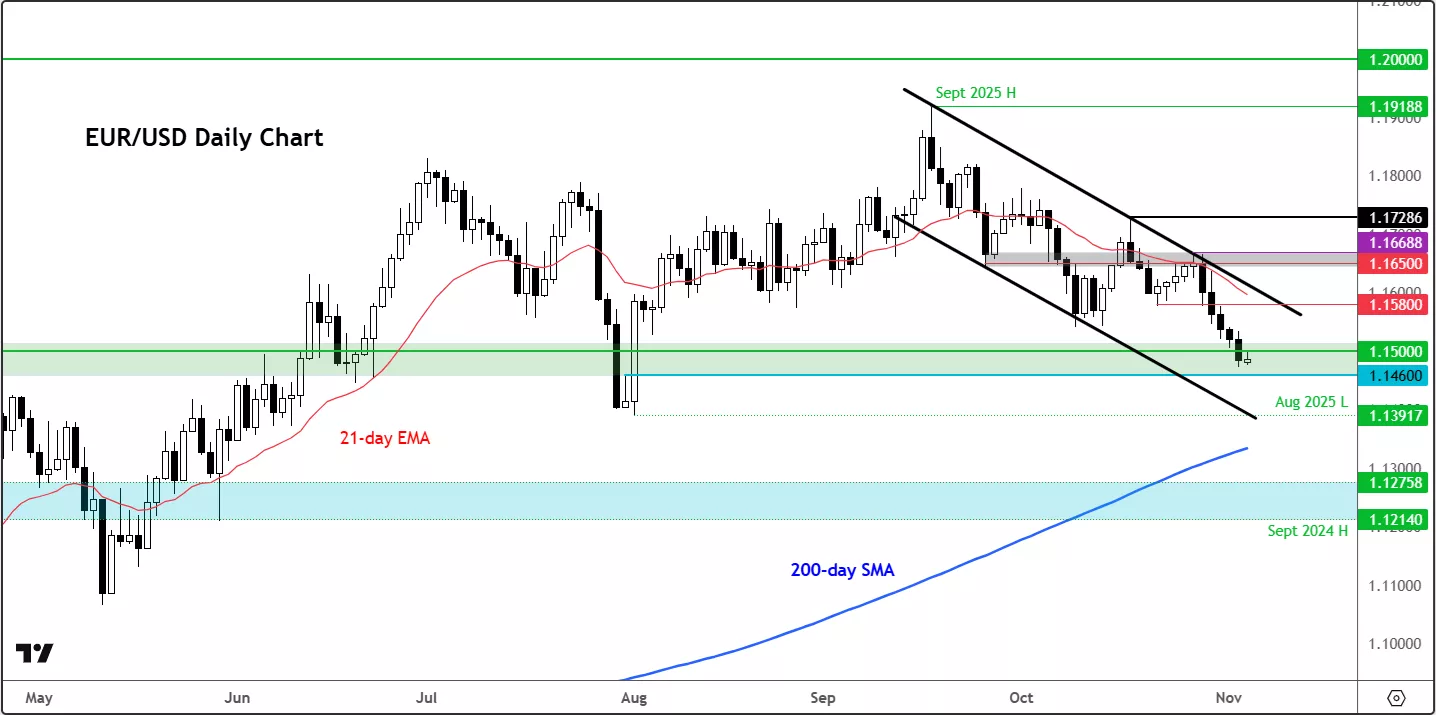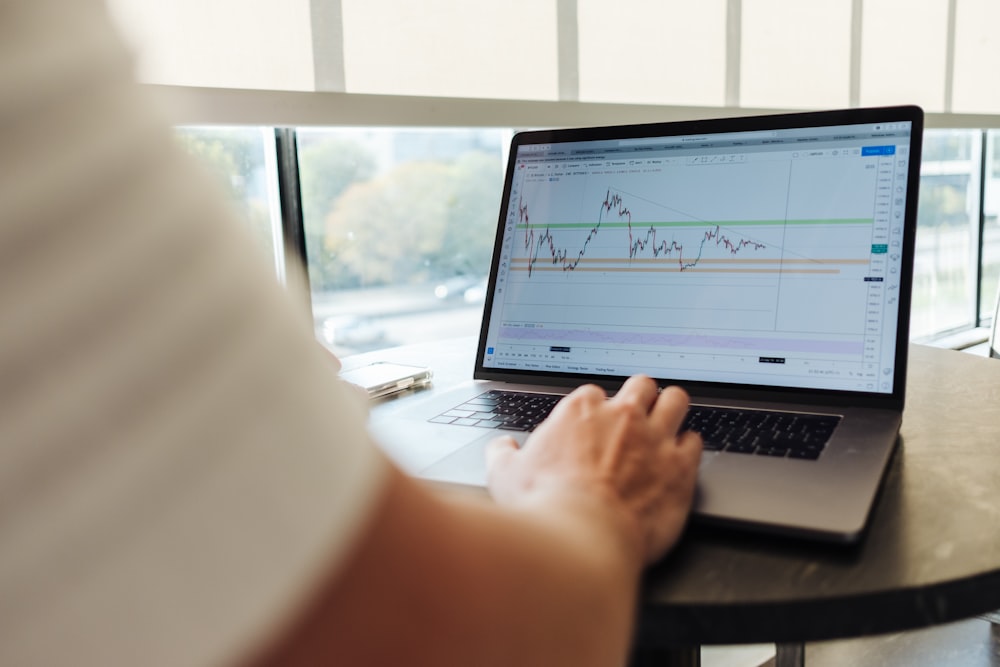EUR/USD: ADP Payrolls In Sharp Focus
Image Source: Unsplash
This week’s risk off tone in equity markets has aided the dollar’s recovery against the risk sensitive commodity dollars as well as the likes of the pound and euro. The greenback has continued its fine form so far this month after Powell’s hawkish FOMC press conference last week. But with the EUR/USD now below $1.15, I would be very surprised if this particular pair doesn’t find support soon thanks to slight improving in Eurozone data and a neutral ECB. Perhaps a recovery in the stock markets could be the trigger, while on the macro front the focus is turning to key US private sector data, namely the ADP and ISM services PMI. Any further weakness in US data could be enough to trigger a drop in US dollar and rebound in the EUR/USD pair.
Stocks remain under pressure
Overnight saw the S&P 500 futures fell further along with the European markets, before bouncing off their lows. But the underlying theme remains mildly risk off with Wall Street finally catching its breath after getting a little too carried away with the AI euphoria. There is also the fact that without any fresh catalysts, investors are running out of reasons to stay optimistic. Traders looking for fresh reasons to justify the lofty valuations that have carried markets this far are not finding too many compelling reasons. One concern here is that the leadership has become worryingly narrow, with a handful of mega-cap tech names doing all the heavy lifting, leaving the broader market vulnerable to any wobble in the AI narrative. This mini correction may not necessarily mark the top but take nothing for granted at these still extremely high levels. Still, with dip-buying being a major theme in equity markets all this time, the downside could be limited for stocks – especially with earnings being decent. And if we do see a recovery in stocks, then that could be the trigger the FX investors are wating for before sending the US dollar lower.
ADP payrolls up next
With official US economic data frozen, everyone — from investors to the Fed — is turning to private reports for clues on how the economy’s really doing. The latest signs haven’t been great. The ISM manufacturing index came in weaker than expected earlier this week. Next up is the ADP payroll report due shortly. All eyes are on whether the labour market can hold up amid growing signs of fatigue. A soft print could turn up the pressure on the Fed to cut again in December. But it is safe to say that the Fed is as split as they can be right now, which is why we are seeing mixed signals about what comes next. For example, Chicago Fed President Austin Gooldsmith yesterday said he’s not ready to cut rates, warning that inflation is still too high. Meanwhile, Steven Miran thinks policy is too tight and risks choking off growth. The Fed Chair Jerome Powell was somewhere in between when speaking at the FOMC press conference last week. The market’s trying to read between the lines, but expectations for a December rate cut have fallen sharply, from around 90% to less than 70% and this has taken a knock on asset prices.
ECB comfort contrasts with market caution
Despite encouraging Eurozone data - GDP figures last week, PMIs and German factory orders this week – and a notably upbeat Christine Lagarde declaring that the ECB is “in a good place,” the euro has still struggled against the dollar, breaking below the $1.15 handle. Lagarde’s comments implied the ECB is largely done with rate cuts for now, barring any sudden downturn in data -- a stance that should offer some degree of support to the single currency.
While near-term sentiment may be tilted towards the dollar, several medium- to long-term factors could lend stronger support to the euro. Chief among them is Germany’s significant fiscal expansion plan -- a near-trillion-euro spending package aimed at defence, infrastructure, and green initiatives. The plan effectively breaks Berlin’s self-imposed debt brake, marking a major policy shift after years of fiscal restraint.
Although most of this spending won’t flow through the economy until 2026, the move has already improved market sentiment around European assets. Over time, this could strengthen the euro as higher investment and growth prospects begin to materialise across the Eurozone.
EUR/USD testing major support
Turning to the EUR/USD chart, the pair continues to edge lower within a well-defined bearish channel that’s been in place since rates peaked in September at 1.0918. Since then, we’ve seen a series of lower highs and lower lows, though no major new low has yet formed. The most recent significant low was set in August at 1.1391. As long as that level holds, we won’t have a significant lower low, meaning the technical bias for this pair remains neutral.

Even if that level breaks, further downside could be limited given that the ECB has shifted to a more neutral stance, with no rate cuts expected in the near term, while the Fed could potentially deliver another rate cut in December — which would put pressure on the US dollar. The area between 1.1460 and 1.1500 is particularly important, as it has historically been a strong reaction zone.
The key question is whether we’ll see a potential recovery from this region. So far, there are no clear signs of a rebound, but if rates do bounce, I’ll be looking for a clean breakout from the bearish channel before turning tactically bullish on the EUR/USD once again.
Fundamentally, I believe downside risk is limited, but from a technical perspective, I’ll wait for a confirmed bullish signal before shifting my stance.
More By This Author:
Fed, BoJ And U.S.-China Talks To Shape USD/JPY Direction
Gold Eases As Risk Appetite Improves On U.S.-China Talks
S&P 500 Remains On The Front Foot




